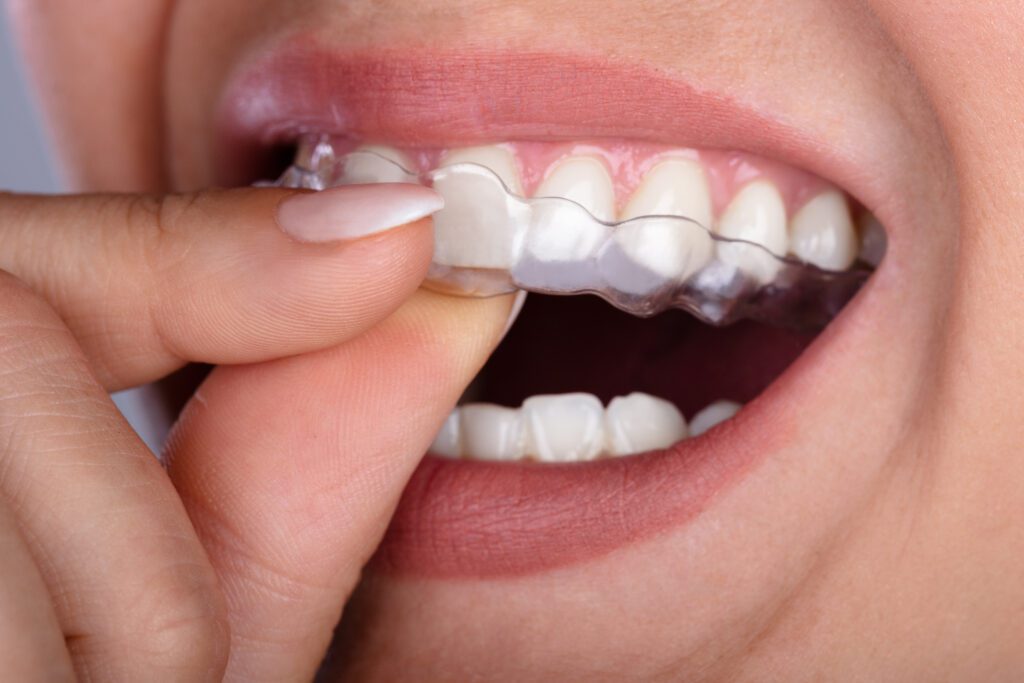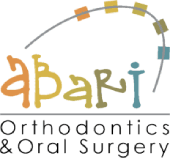A Simple and Aesthetic Alternative to Braces

Clear Aligners at Abari Orthodontics
Here at Abari Orthodontics and Oral Surgery, we offer clear aligners San Dimas patients love for their orthodontic treatment. They’re an effective alternative to traditional braces with many advantages. We’ve found that some of our patients greatly appreciate this orthodontic option over traditional braces. Two options we offer for clear aligners are Abari aligners and Invisalign.
How Do Clear Aligners Work?
Clear aligners utilize a series of custom-made, strong plastic trays to adjust your teeth into proper alignment, avoiding the discomfort of metal wires and brackets. Each aligner is meticulously crafted to fit snugly over your teeth, applying gentle force to gradually shift your teeth into the desired position. As you progress through the treatment, you will transition to a new set of aligners approximately every two weeks, with each set bringing your teeth closer to their final alignment.
These aligners should be worn for at least 20 hours a day to achieve optimal results. The beauty of clear aligners lies in their design; they are removable, allowing you to maintain excellent oral hygiene easily. You can take them out when eating, brushing, or flossing, which means there are no dietary restrictions and cleaning your teeth is straightforward — no navigating around brackets and wires.
Treatment duration with clear aligners typically ranges between nine to 18 months, though this can vary based on the complexity of your alignment issues and how consistently you wear your aligners. Adhering to your orthodontist‘s guidance is essential for staying on track with your treatment plan. Remember, the success of aligners depends significantly on your commitment to wearing them as recommended.
The Four Steps of the Clear Aligner Treatment Process
Embarking on the journey to a straighter smile with clear aligners involves a straightforward process tailored to ensure the best outcomes. Here’s a breakdown of the four key steps in the clear aligner treatment process:
- Initial Consultation and Assessment: During this visit, Dr. Abari will examine your teeth and discuss your dental history and aesthetic goals. He will assess your specific alignment issues and plan your treatment.
- Custom Aligner Fabrication: Based on the initial assessment and 3D models, Dr. Abari will design a series of custom-made aligners tailored to your teeth. These aligners are crafted from high-quality, BPA-free plastic, providing a comfortable fit and a nearly invisible appearance. Each aligner is designed to make slight adjustments to the position of your teeth, gradually moving them toward the desired alignment.
- Progressive Alignments: You will wear each set of aligners for about two weeks before switching to the next in the series. It’s crucial to wear your aligners for the recommended 20 to 22 hours per day, removing them only for eating, drinking anything other than water, and your oral hygiene routine. Regular check-ups with your orthodontist will ensure your treatment is progressing as expected and allow any necessary adjustments to the treatment plan.
- Treatment Completion and Retention: Once you have progressed through all your aligners, your teeth should be in their new, corrected positions. However, to prevent your teeth from gradually shifting back to their original positions, you’ll likely need to use a retainer. Dr. Abari will discuss the best retainer options for you and will guide you on how often and how long to wear your retainer to maintain your new smile.
The Daily Experience with Clear Aligners
As you begin each new stage of your clear aligner treatment, you might experience slight discomfort for the first few days. This sensation is a normal part of the process, indicating that the aligners are effectively moving your teeth. It’s similar to the adjustment period after getting traditional braces tightened. Although you might be tempted to remove your aligners to ease this discomfort, it’s crucial to keep them on as prescribed. Removing them frequently can prolong your treatment duration. Except during meals and oral hygiene routines, your aligners should be worn consistently to ensure timely and effective results.
Most patients find that speaking clearly with aligners is not a significant challenge, although there may be a brief adjustment period as you get accustomed to them.
Caring for Your Clear Aligner Trays
Maintaining your clear aligners is straightforward. To clean them, gently brush and rinse with lukewarm water, and use specialized cleaning tablets as recommended. It’s important to brush and floss your teeth after each meal before reinserting your aligners to maintain optimal oral health.
Enjoying your favorite foods is a breeze with clear aligners, as there are no restrictions like those associated with traditional braces. However, avoid chewing gum with aligners in, as it can stick to them. Smoking is also discouraged during treatment as it can stain the aligners and negatively impact your oral health.
Retainers After Clear Aligners
At the conclusion of your orthodontic journey, retainers play an essential role in maintaining the alignment of your teeth. Teeth need time to stabilize in their new positions, and wearing your retainers as instructed by your orthodontist is critical to prevent them from shifting back.
Advantages of Clear Aligners
Clear aligners offer numerous benefits, especially for our patients in San Dimas looking for a less noticeable orthodontic solution or those needing minor corrections post-braces. They are easy to clean, reducing the risk of gum disease and cavities. Unlike traditional braces, clear aligners are less irritating to the gums and cheeks and protect against wear from tooth grinding. Their removability also simplifies brushing and flossing, promoting better overall dental hygiene.
Straighten Your Smile Covertly at Abari Orthodontics and Oral Surgery
Clear aligners represent a modern, effective, and discreet solution for straightening teeth. At Abari Orthodontics and Oral Surgery in San Dimas, we are committed to providing our patients with personalized and comfortable orthodontic care. Whether you’re starting your journey towards a straighter smile or need to maintain the results of previous orthodontic work, our team is here to guide you every step of the way. Embrace the clear path to a confident smile with clear aligners.

